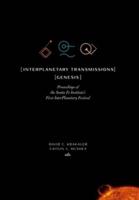Publisher's Synopsis
The Ka-band study team was chartered in late 1987 to bring together all the planning elements for establishing 32 GHz (Ka-band) as the primary downlink frequency for deep-space operation, and to provide a stable baseline from which to pursue that development. This article summarizes the results of that study at its conclusion in mid-1988, and corresponds to material presented to NASA's Office of Space Operations on July 14, 1988. For a variety of reasons, Ka-band is the right next major step in deep-space communications. It offers improved radio metric accuracy through reduced plasma sensitivity and increased bandwidth. Because of these improvements, it offers the opportunity to reduce costs in the flight radio system or in the DSN by allocating part of the overall benefits of Ka-band to this cost reduction. A mission scenario is being planned that can drive at least two and possibly all three of the DSN subnets to provide a Ka-band downlink capability by the turn of the century. The implementation scenario devised by the study team is believed to be feasible within reasonable resource expectations, and capable of providing the needed upgrade as a natural follow-on to the technology development which is already underway. Layland, J. W. and Horttor, R. L. and Clauss, R. C. and Wilcher, J. H. and Wallace, R. J. and Mudgway, D. J. Jet Propulsion Laboratory ...












